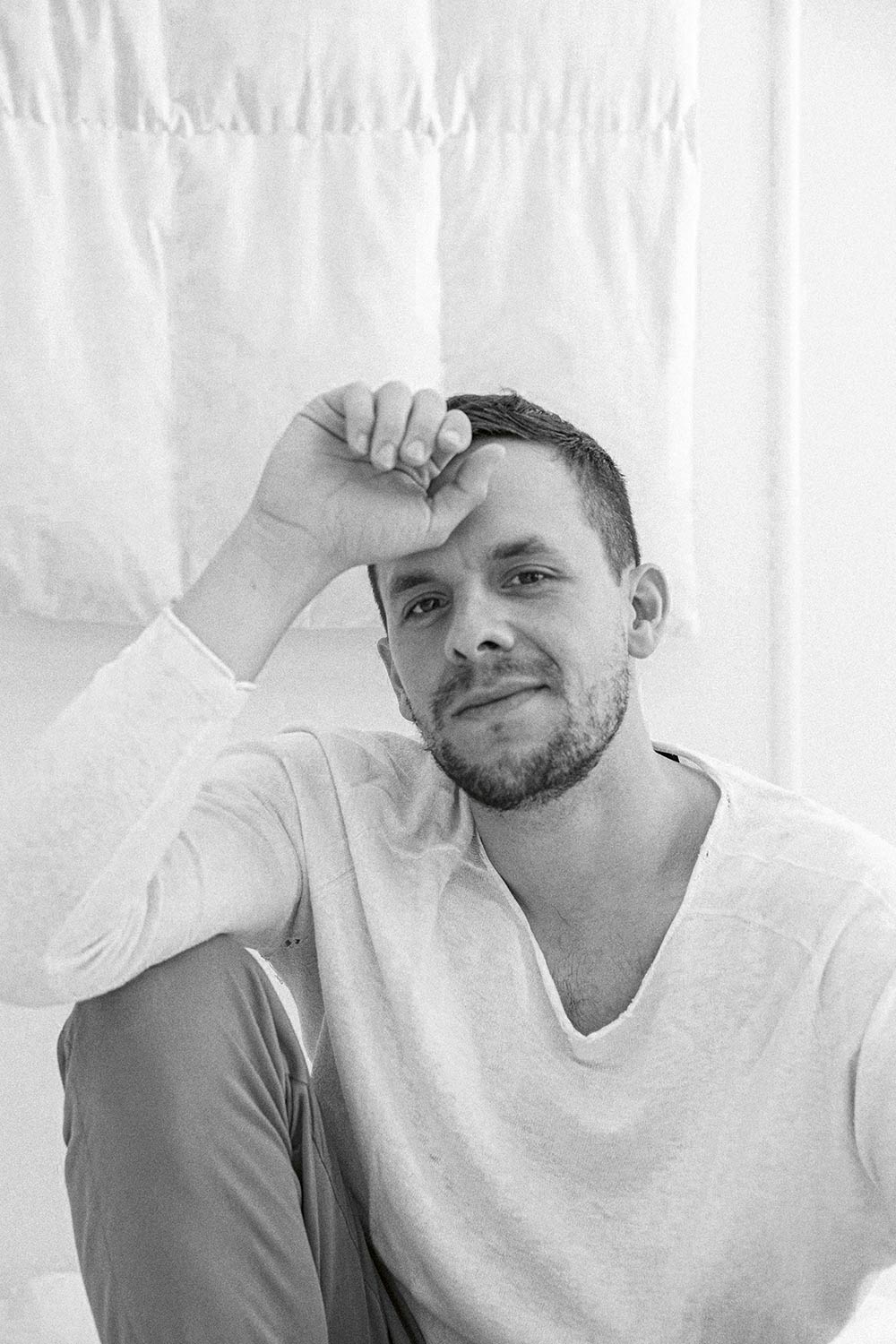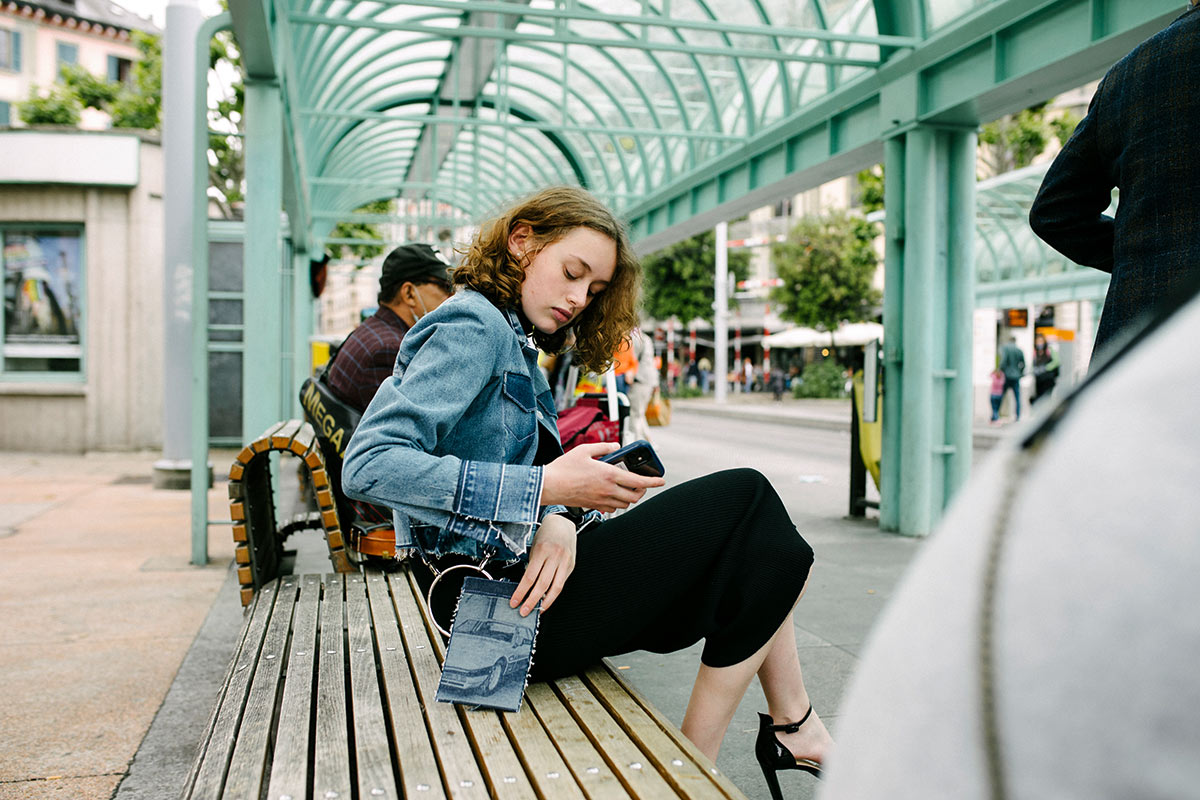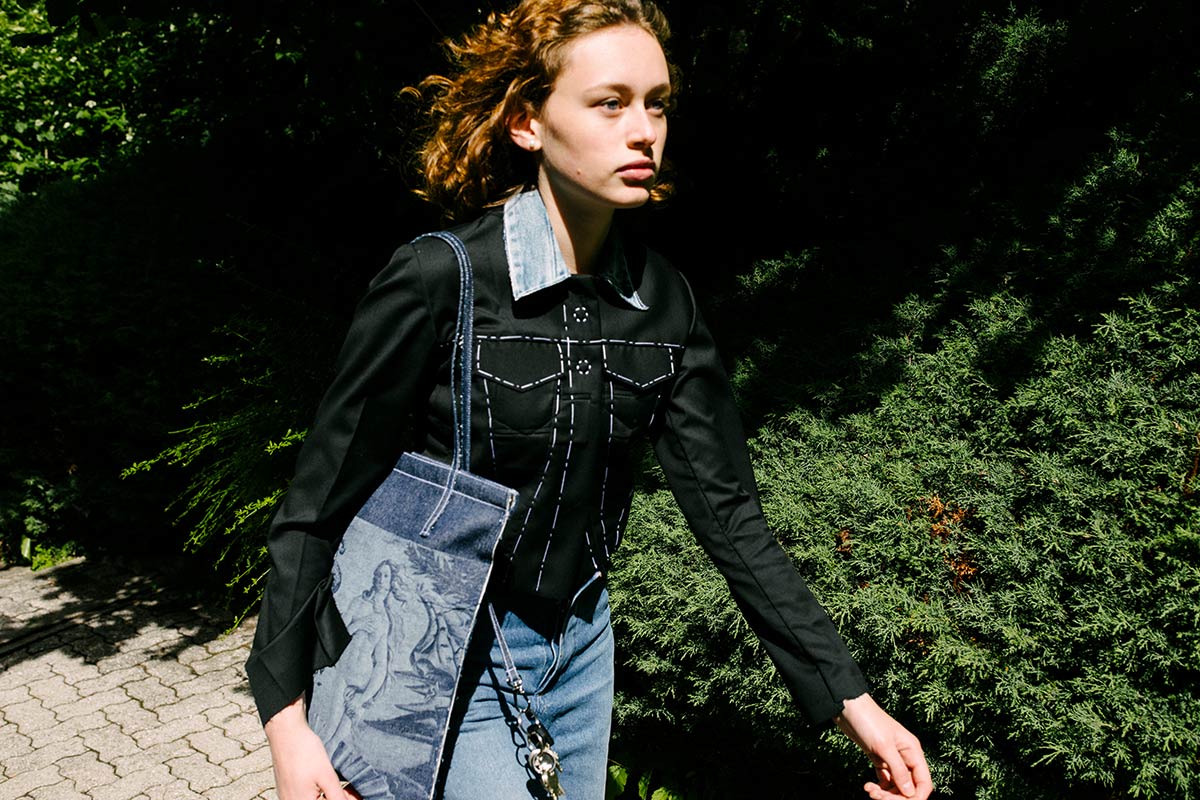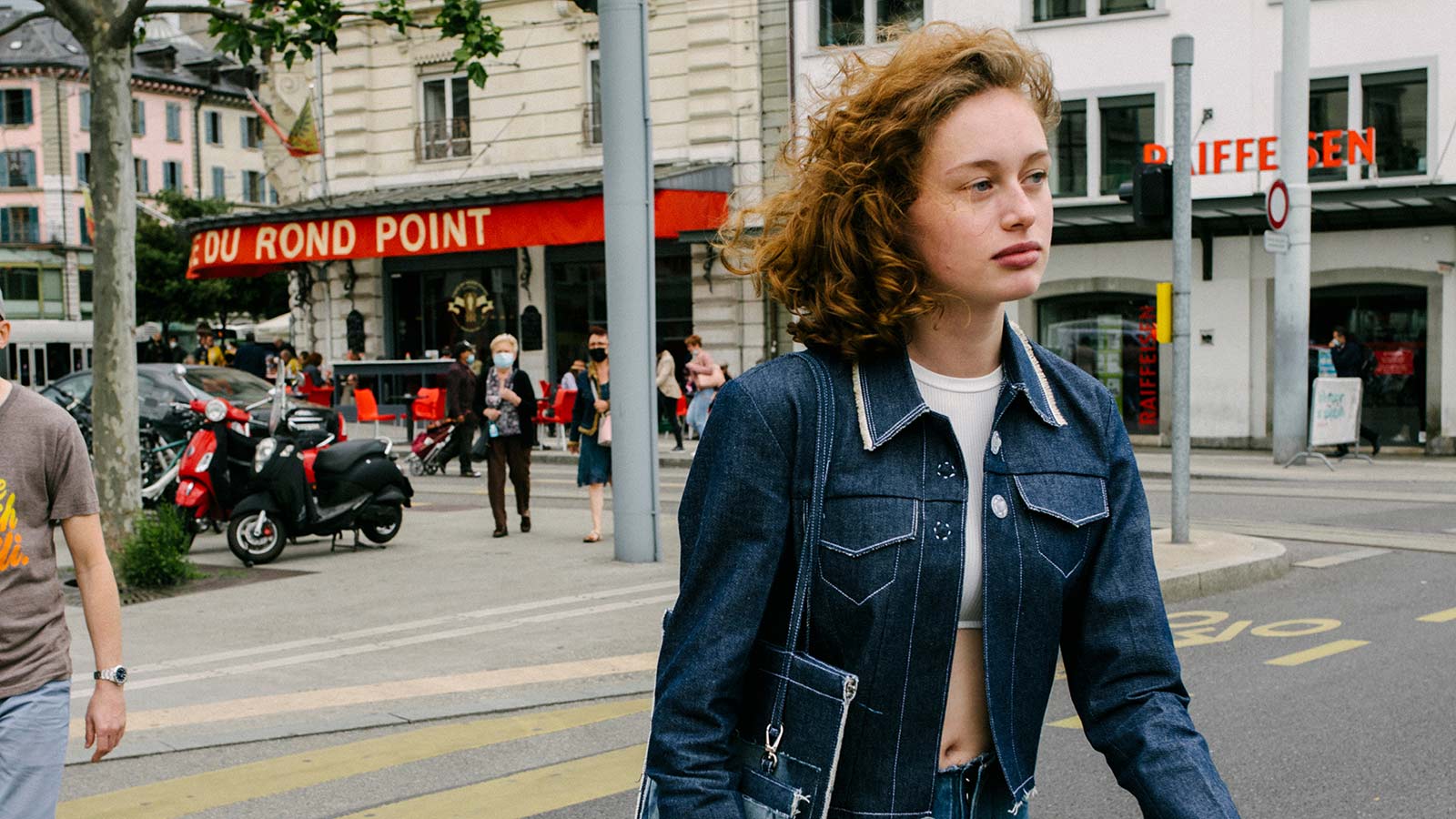The evolution of denim from gold-digger’s favorite to haute couture textile reads better than any Cinderella story. With his label Forbidden Denimeries, Geneva-based Mikael Vilchez is doing his bit to ensure that denim outstrips other fabrics.
Photos © Elizaveta Giray, Nicolas Schopfer
FACES: How would you describe your label and its philosophy?
Mikael Vilchez: Forbidden Denimeries reinvents denim through modern and sustainable pieces. My philosophy is to offer people clothing that is as original as it is stylish, yet valuable and functional. The aesthetic of Forbidden Denimeries is eclectic and constantly evolving, always guided by the search for the timeless beauty of this fabulous material: denim.
F: What skills did you learn at HEAD Genève, and how important are fashion schools like this in giving a designer the foundations for a successful career in fashion?
MV: HEAD taught me technical discipline and opened my eyes to the limitlessness of my creativity. The greatest strength of this school is
in that she allows her students to develop their own creative universe without trying to push them in a particular direction. They also teach you the best design methods. However, it is not the school that guarantees a successful career, but other factors such as will, courage, motivation and luck.
F: You have already won several prizes with your collections. How important are these for you and the success of your label?
MV: It’s always an honor to win an award. But the product and the story you tell are the most interesting for customers.
F: You spent a whole year learning at Balenciaga. What is the most important lesson you learned during your internship there?
MV: Perseverance and above all modesty towards the seamstresses and pattern makers who work in the brand’s workshop.
F: What was the idea behind devoting yourself entirely to denim fabric?
MV: Denim has been a symbol of various struggles for emancipation in many eras. It is also a material that becomes more beautiful with age. Apart from leather, I think it is the only textile that can age with such beauty and visual richness. The very clear codes of jeans allow endless play with denim.
F: What is the first step when you design a new collection?
MV: It all starts with the women, my muses, who have shaped my life in one way or another. I usually pay homage to these women who have influenced my identity.
F: What do you use to treat your garments to achieve very individual looks?
MV: I work intensively on the cut, the fit and the finishing. This is what makes the difference between a cheap and a luxury garment.
“Fast fashion is for the garbage can.”
F: How can denim be produced sustainably?
MV: By means of production that pays attention to its water consumption and the working conditions of its workers and does not use chemicals in washing. The choice of denim is also important. Recycled or organic denim are alternatives for more sustainable production.
F: What’s the best thing about having your own label?
MV: That I am free to decide in which direction I want to go.
F: What do you do when the muse just won’t kiss you?
MV: I take my dog for a walk in the countryside. This is my way of meditating.
F: What is the biggest shame in the fashion industry?
MV: Never question yourself.
F: Contrary to what the public thinks they know about the fashion industry: What is the industry actually like?
MV: This topic is very much on my mind at the moment. I recently decided to take some time out to recharge my batteries. The fact that several boutiques sold Forbidden Denimeries in their range made me proud, but also forced me to adopt the typical rhythm of the industry and take the seasons into account in fashion. This pressure soon drained me and I decided to present my designs outside of the fashion calendar and only show them when I felt ready. Forbidden Denimeries was my final collection. I designed them in the most artistic way possible – somewhere between extreme craftsmanship and performance. I miss this artistic approach and would love to return to it, no matter what it costs me. Designing a soulless garment just for the sake of commerce is not interesting to me. The boutiques chose me for my creativity and professionalism, so I’m sure they are open-minded enough to work with me to make the fashion industry more diverse, more personal and ultimately more human.
F: Which fashion person do you admire?
MV: Cristóbal Balenciaga. For me, he is the greatest fashion designer that fashion has ever seen. I have always admired him for his sense of style and for his timeless style, which is luxurious without being over the top.
F: Which preconception about the fashion industry is wrong?
MV: That working in it is an easy and fun job. It is exactly the opposite. The most important thing is that you know why you have chosen a job in the fashion industry. Otherwise you can’t keep up. I chose to create my brand because creation is essential to me.
F: Are Fashion Weeks still important at all?
MV: Not for me anymore. In my opinion, Fashion Weeks are more important for the industry and its workers than for the people and customers – it’s a dilemma.

F: Is it necessary to divide collections into those for women and men?
MV: No, unless the fit needs to be adjusted to suit different body types in terms of bust, hips or waist, for example.
F: What trend in the fashion industry are you worried about?
MV: The unchecked development of fast fashion. Fast fashion is for the garbage can. It’s time people learned to save money and buy sustainable clothing.
F: Is the design profession more art or craft?
MV: That is very personal and depends on the individual. I am both and very interested in developing my artistic side by exploring other purely sculptural areas such as painting or sculpture, installation and video. I would like to have an exhibition in a gallery soon.
F: How would you describe the Swiss fashion scene?
MV: Eclectic and talented, but unfortunately still too little known.
F: Are Swiss designers sufficiently supported in our country?
MV: Unfortunately, it is still very difficult to get financial support as a designer in Switzerland. Even if you can already sell your brand in various boutiques and stores, it takes a long time to receive subsidies, even though production is then much more urgent.
F: How do you envision the world in ten years?
MV: Part of me is very afraid of what the world might look like in light of current events and global warming. But I have faith in humanity, which nevertheless sometimes has to suffer severe shocks in order to develop in the right direction…
F: Where do you buy your clothes?
MV: Second-hand or from sustainable brands.
F: What item of clothing would you never give away?
MV: My Levis denim jacket, which I redesigned.
F: You have three free wishes. What do you wish for?
MV: World peace. World peace. World peace.











